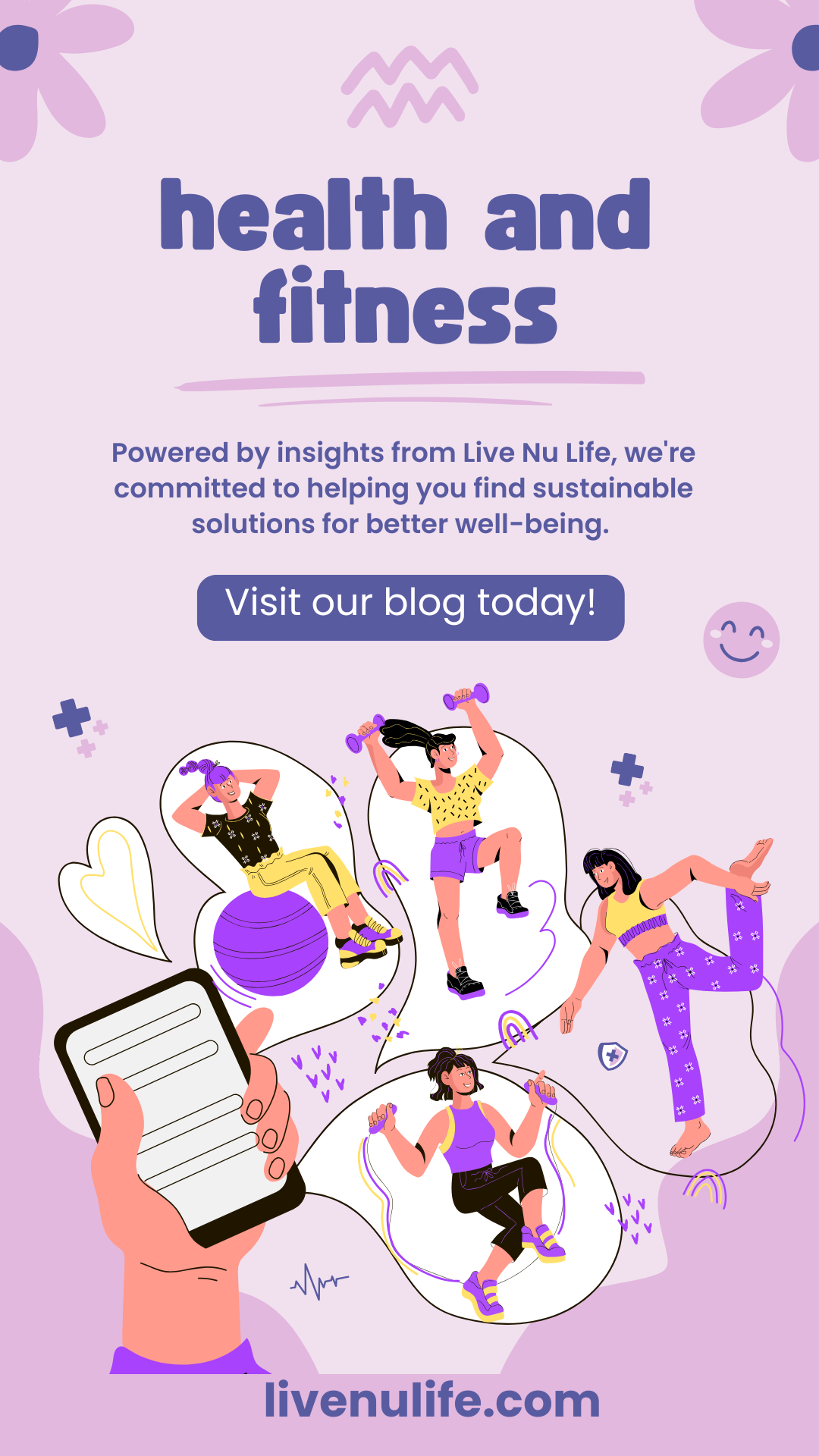
Staying Healthy in Today’s Fast-Paced Society
Health and Fitness in today’s fast-paced, digitally driven society should no longer be optional; rather, it should become part of everyday living! Wellness no longer refers to mere buzzwords but to lifestyle practices which encourage an individual’s physical, mental, and emotional capacities for optimal performance – this means weight loss, increased stamina or overall improvements to one’s well being are possible through better understanding the key components of a healthy lifestyle – understanding these core components will open new pathways towards taking control over one’s wellbeing via smart habits, modern tools or sustainable strategies and this guide offers exactly that roadmap!
Exercise and Health and Fitness
At the core of every successful fitness journey is exercise – yet that means more than simply lifting weights or spending hours on a treadmill: exercising means moving with purposeful movement through strength training, running, dancing or functional workouts that strengthen heart muscles while increasing flexibility and functional fitness.
Set an activity goal of at least 150 minutes of moderate aerobic exercise each week and two muscle strengthening exercises twice each week as part of your routine for best metabolic results and resilience building. Don’t feel pressured into performing high intensity workouts daily – simply walking, cycling or playing sports will have profound impacts on overall well being!
Success with fitness regimens depends upon consistency and finding engaging movements; when workouts become something you look forward to instead of something to dread doing.
Nutrition and Hydration
Proper nutrition and hydration is crucial in providing your body with high-quality fuel to function optimally, so choosing whole food sources like lean proteins, veggies, whole grains and healthy fats as these provide exactly what your body requires for healing, rejuvenation and renewal.
Proteins contribute to building muscle mass and repairing tissues while complex carbs like quinoa and oatmeal offer energy for workouts. Avocados and nuts offer healthy fats which promote better brain and cardiovascular functioning while fiber-rich foods help digestion while simultaneously stabilizing blood sugar levels.
Make sure not to forget hydration! Water plays a critical role in helping our bodies regulate body temperature, aid digestion and support muscle function. We should drink regularly throughout the day–particularly before and after workouts–in order to remain well hydrated as dehydration often results in fatigue and lethargy.
Recovery, Rest & Stress Management
Relaxation, recovery & stress management are key components of any fitness regime. Muscle repair occurs as energy stores recharge. To maximize benefits & efficiency aim for at least 7 – 9 hours of quality restful sleep each night in order to fully recharge reserves and rest your system properly.
Stress management is of equal significance. Prolonged exposure to cortisol-releasing stressors such as chronic exercise can release cortisol into your system, interfering with fitness goals and immunity levels as well as diminishing sleep quality. Engaging in simple practices such as deep breathing exercises, yoga stretching or taking an outdoor stroll has proven successful at decreasing cortisol production levels – therefore decreasing stress significantly.
Rest days and mental refreshers shouldn’t be seen as acts of laziness; rather, they play an essential part of an effective fitness lifestyle.
Prevent Injuries and Overtraining
Pushing yourself beyond your limits is great, but overtraining and poor form can quickly lead to injuries. Start each session off right by engaging in an effective warm-up that activates muscles and joints as well as mobility drills or dynamic stretching that prep the body for movement.
Make an investment in quality footwear, use only appropriate equipment, and maintain correct posture during physical activities. If anything seems off during exercise sessions, stop and evaluate: listening to what your body tells you is not weakness – it is wisdom!
Health and Fitness Trends (2025)
The fitness world has experienced phenomenal expansion over recent years as advanced technologies and holistic approaches gain ground.
Wearable fitness technology such as smartwatches and AI-powered apps have made fitness monitoring more accessible than ever, offering real-time heart rate, sleep quality monitoring and caloric intake measurements as well as tailored plans specific to each user’s progress.
Zone 2 cardio training has quickly gained recognition as an efficient means of increasing endurance and fat loss without overexertion – perfect for people of all ages looking for effective methods of dropping unwanted pounds. Zone 3 provides comparable capabilities.
Mobility training has finally gained the respect it deserves. Engaging in regular mobility work helps enhance posture, joint health and injury resistance while mindful movement practices such as yoga or tai chi can promote physical as well as mental clarity.
Hybrid training models that combine classroom classes and digital platforms are growing more popular as they combine both flexibility and community support into a single offering.
Establish Your Fitness Routine | Body Building
Create an exercise program tailored specifically for you based on your lifestyle – don’t feel pressured into exercising daily in order to reach health. An engaging weekly plan could include activities such as:
-
Two days of strength training (push, pull and leg exercises).
-
Every week, two days should be set aside for cardiovascular (HIIT or steady-state) training.
-
One or two days of mobility/flexibility work.
-
At times it may be beneficial to take one or two “active recovery or light movement days”.
Make realistic fitness goals tailored to your current fitness level, monitor progress regularly (without becoming obsessed!) and celebrate small victories along the way.
Fit Your Goals
Everyone’s fitness goals vary. To promote fat loss, prioritize cardio and nutrition; strength training combined with protein consumption is recommended; flexibility benefits can be gained by adding yoga or dynamic stretching exercises into their routine; for optimal effectiveness.
Use a notebook or fitness app to keep track of workouts, sleeping patterns and nutrition – make adjustments based on what works and doesn’t.
FAQ
1. Are You Wondering: “How Should I Exercise Weekly?”
For optimal health benefits, aim for at least 150 minutes of moderate cardio exercise and two days of strength training every week; adjust this plan based on your personal fitness goals and needs.
2. What should your primary training focus on: cardio or strength?
Both types of exercises play a valuable role. Cardio can improve endurance and cardiovascular wellness while strength develops muscles while breaking up fat deposits in your body.
3. Do I Need Supplements?
Not necessarily – A balanced, nutritious diet often meets all our dietary requirements; however, protein powder, creatine supplements or multivitamins could fill any potential gaps within it.
Proper hydration is of vital importance; don’t wait until thirst strikes before starting to drink water regularly throughout your day! Take good care of yourself today by staying hydrated!
Conclusion
Gaining Balance through Health and Fitness doesn’t need to mean Perfect; rather it should focus on Progress. By mixing exercises with nutrition, rest, and mindset-shifts you can create an approachable lifestyle that supports both your goals and daily tasks while giving energy for daily tasks. Start small but Be Consistent in order to reach success along your Journey; becoming stronger healthier versions of ourselves always worth all our efforts! Read More Blogs



